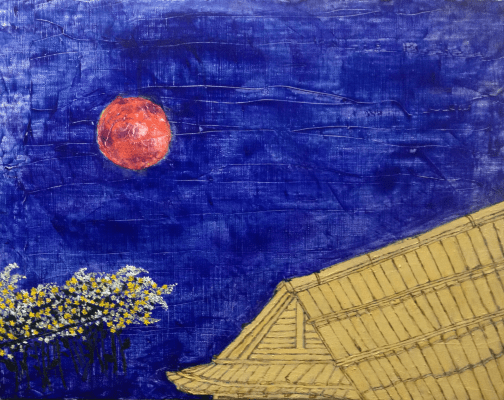Japanese Buddhist poetry: Saigyō, nature, and solitude
Lee Jay Walker
Modern Tokyo Times

The young Saigyō Hōshi (birth name Satō Norikiyo) was born to a noble family in Kyoto. However, the cultural dynamics were shifting because Buddhism was increasingly being questioned during his period of life – despite Buddhism remaining potent. Therefore, with Saigyō living between 1118-1190, he felt the internal tensions between new samurai warriors who were challenging the traditional court nobles.
Saigyō, for no known reason, decided to become a Buddhist monk at an early age. Henceforth, at the age of 22, he took the Buddhist religious name of En’i despite writing under the name of Saigyō at a later date.
It is known that Saigyō adored nature and the solitary life he found during his travels. Thus he traveled extensively to Ise, Mount Koya, Mount Yoshino, Northern Honshu, Saga, and other parts of Japan. During his journeys, he would witness the beauty of nature, write poetry, contemplate the world, and often seek solace away from the world.

Saigyō wrote:
Leaving no trace
Once again into the mountains’ depths
I’ll make my way;
Not to hear the world’s pains–
I wonder, is there such a place?
In another lovely poem, he wrote:
The years and months:
How have I
Spent them?
Yesterday, he was here, but
Today is gone – even so is this world.

Shintoism and various Buddhist sects brought a sense of purpose to Saigyō. Similarly, nature and Shintoism naturally fuse. Therefore, different Buddhist concepts and his independent mind brought richness to his life outside the world of the warring clans.
Saigyō pointedly questioning himself wrote:
My fickle
Spirit: if in its strength
I were to place my trust,
Well then! What
At the end, would I feel?
Overall, Saigyō was inspired by nature, various Buddhist sects, poetry, high culture, and Shintoism. Hence, unlike the poor who felt the convulsions of the warring clans and the edicts that ruled them, Saigyō could spend time in deep contemplation and visit holy places – concerning Buddhism and Shintoism. Therefore, Saigyō connected his soul to religion and nature that inspired him to the very end!
ALL ART BY SAWAKO UTSUMI
https://fineartamerica.com/featured/the-desolate-japanese-buddhist-path-sawako-utsumi.html
https://fineartamerica.com/featured/bleak-midwinter-and-the-buddhist-tree-of-life-sawako-utsumi.html
http://fineartamerica.com/profiles/sawako-utsumi.html – Sawako Utsumi and where you can buy her art, postcards, bags, and other products. Also, individuals can contact her for individual requests.
http://www.wakapoetry.net/skks-xvii-1643 – Saigyō poetry
http://www.wakapoetry.net/skks-xviii-1750/ – Saigyō poetry
http://www.wakapoetry.net/skks-xviii-1749/ – Saigyō poetry

PLEASE DONATE TO HELP MODERN TOKYO TIMES
Modern Tokyo News is part of the Modern Tokyo Times group
DONATIONS to SUPPORT MODERN TOKYO TIMES – please pay PayPal and DONATE to sawakoart@gmail.com
http://moderntokyotimes.com Modern Tokyo Times – International News and Japan News
http://sawakoart.com – Sawako Utsumi personal website and Modern Tokyo Times artist
https://moderntokyonews.com Modern Tokyo News – Tokyo News and International News
PLEASE JOIN ON TWITTER
https://twitter.com/MTT_News Modern Tokyo Times
PLEASE JOIN ON FACEBOOK